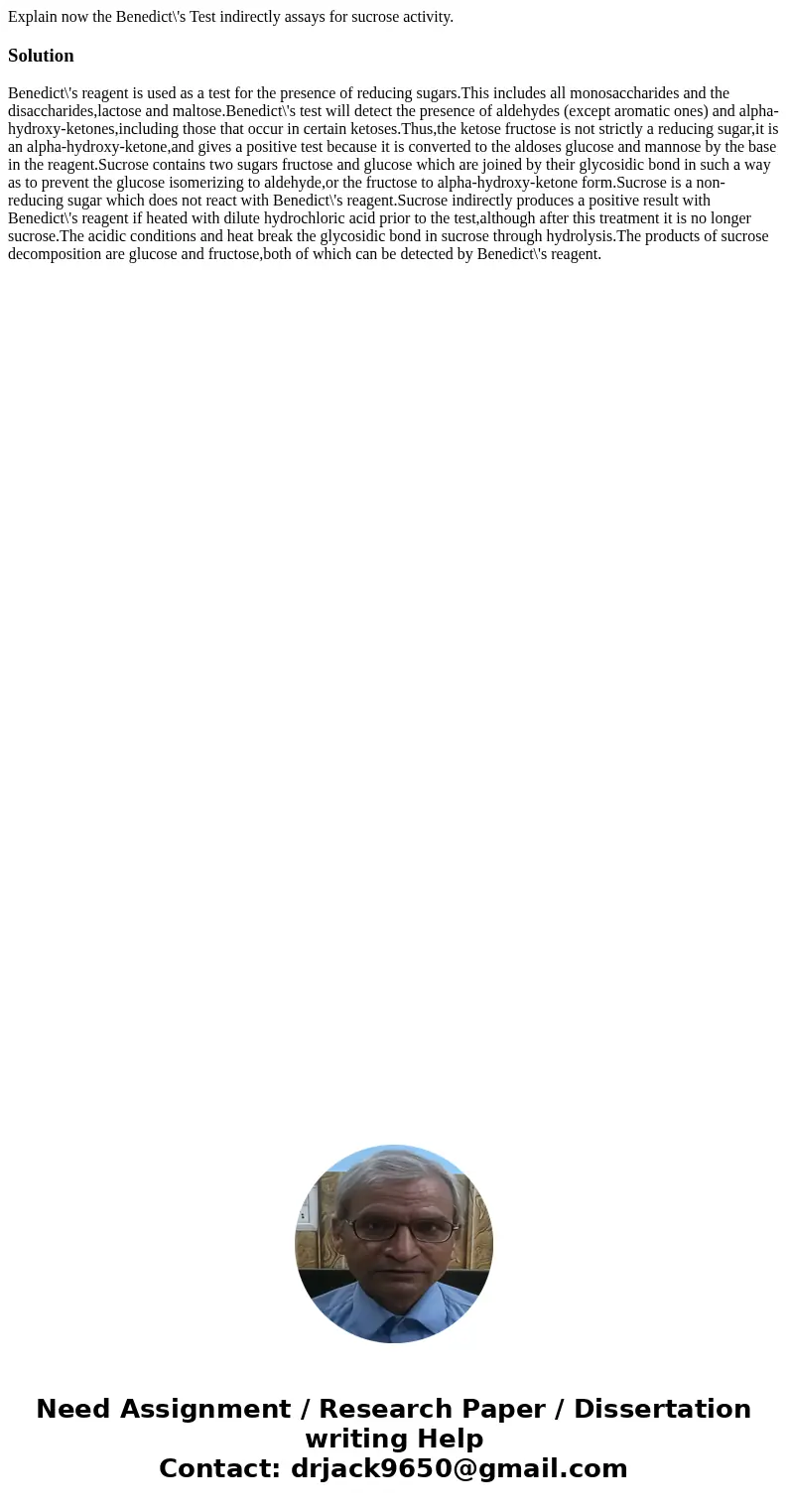Explain now the Benedicts Test indirectly assays for sucrose
Solution
Benedict\'s reagent is used as a test for the presence of reducing sugars.This includes all monosaccharides and the disaccharides,lactose and maltose.Benedict\'s test will detect the presence of aldehydes (except aromatic ones) and alpha-hydroxy-ketones,including those that occur in certain ketoses.Thus,the ketose fructose is not strictly a reducing sugar,it is an alpha-hydroxy-ketone,and gives a positive test because it is converted to the aldoses glucose and mannose by the base in the reagent.Sucrose contains two sugars fructose and glucose which are joined by their glycosidic bond in such a way as to prevent the glucose isomerizing to aldehyde,or the fructose to alpha-hydroxy-ketone form.Sucrose is a non-reducing sugar which does not react with Benedict\'s reagent.Sucrose indirectly produces a positive result with Benedict\'s reagent if heated with dilute hydrochloric acid prior to the test,although after this treatment it is no longer sucrose.The acidic conditions and heat break the glycosidic bond in sucrose through hydrolysis.The products of sucrose decomposition are glucose and fructose,both of which can be detected by Benedict\'s reagent.

 Homework Sourse
Homework Sourse